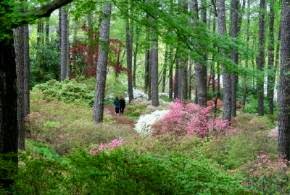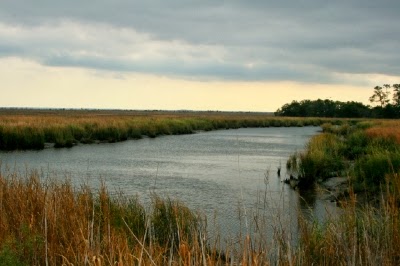The 2014 azalea blooms are nearing their PEAK at Callaway Gardens in Pine Mountain, Georgia. If you hope to see them, this weekend is the time!
Here's a video invite from Edward Callaway:
To learn more about Callaway Gardens, please visit www.exploresouthernhistory.com/callawaygardens1 or www.callawaygardens.com.
This blog provides information on the fascinating history, historic sites and great points of interest in Georgia, with a focus on both cultural and natural history. Posts are made regularly by Southern author and historian Dale Cox.
Wednesday, April 9, 2014
Tuesday, April 1, 2014
Callaway Gardens blooms should be spectacular in one week
 |
| Callaway Gardens |
Noted meteorologist Kurt Schmitz was at the gardens today and reported that the azaleas are coming in a little slow this year, but should be really nice in about one week. Mid-April should be quite spectacular.
 |
| Callaway Gardens |
A labor of love for nearly 75 years, Callaway Gardens has achieved the dream of its founders. The scenery is spectacular and hundreds of thousands of people visit each year.
To learn more, please visit www.exploresouthernhistory.com/callawaygardens1.
Labels:
2014,
azalea blooms,
blooms,
callaway gardens,
georgia,
how are the blooms,
pine mountain
Monday, January 20, 2014
Historical research reveals new proof of Georgia monster!
 |
| Domain of a River Monster? |
The Altamaha-ha, as it is called by locals, is a giant creature often seen in the channels, creeks and old rice canals of the Altamaha River estuary near Darien. Claims of its existence burst onto the scene during the 1980s when fishermen reported seeing the monster. They described it as a 30-foot long creature with flippers like a seal.
Eyewitness stories of 20th century Altamaha-ha sightings are common, but a new research project has revealed that two sightings of the creature were documented in the 182s!
A sea captain named Delano reported that he saw a monster in 1826 and again in 1830 while sailing along the coast of Georgia in his schooner, the Eagle.
The first sighting was in Doboy Sound, which separates Sapelo Island from the mainland of Georgia and connects to the Altamaha River not far from Darien. The second sighting, in 1830, was off St. Simons Island just south of the mouth of the Altamaha.
The discovery of the new accounts, which are unveiled in an article at ExploreSouthernHistory.com, reveal that people have been seeing something strange in and around the Altamaha River for nearly 200 years!
To read the complete article, please visit www.exploresouthernhistory.com/altamahaha.
Labels:
altamahaha,
darien,
georgia,
river monster,
sea monster,
sighting
Sunday, January 5, 2014
Civil War burning of Darien was branded a war crime by both armies
 |
| Ruins at Darien, Georgia |
There were no Confederate soldiers in Darien when the atrocity took place, only women, children and the elderly. The city was shelled before it was torched and one woman had a hole torn in her dress by a cannon ball but miraculously was not injured.
Among the regiments taking part in the burning of Darien was the famed 54th Massachusetts Infantry, a Union regiment composed of black soldiers. Its commander, Col. Robert Gould Shaw, called the incident a "dirty piece of business." He had objected to the action, but Montgomery had directed that his orders be carried out, telling Shaw that Southerners must be "swept away by the hand of God, like the Jews of old."
 |
| Col. James Montgomery |
Confederate General P.G.T. Beauregard also protested the incident in a July 1863 letter to Union General Quincy A. Gillmore:
...Ravaging and burning private property are acts of licentiousness unauthorized by the laws of war and the belligerent who wages war in that manner must justly...be regarded as carrying on war like a furious barbarian.
Gillmore's response was to give Montgomery command of a brigade during the coming invasion of Florida that culminated at the Battle of Olustee on February 20, 1864.
Please click here to learn more about the burning of Darien, Georgia: www.exploresouthernhistory.com/darienburning.
Labels:
54th massachusetts,
burning of darien,
civil war,
darien,
georgia,
james montgomery,
shaw
Georgia State Parks Offers RV Deals for Snowbirds Flocking to and through Georgia
 |
| Stephen C. Foster State Park |
ATLANTA, January 3, 2014 — The seasons have changed and winter has arrived, which means that Georgia State Parks has one for the birds—the sun-seeking snowbirds, that is. It’s time for the annual migration when residents from points north seek southern sunshine. This year Georgia State Parks is offering deals to RVers to nest for a while in the Peach State by offering a 50 percent discount off the regular campsite rates of $25 to $32 per night with a minimum of a 30-day stay from now until February 28, 2014. To take advantage of this fine-as-a-feather offer when making reservations, use promotional code SnowBird50%. For additional details, visit www.gastateparks.org/snowbird.
 |
| Kolomoki Mounds State Park |
On the western edge of Georgia lies Florence Marina State Park in Omaha. While its primary design is for water lovers and water sports, it offers a natural deepwater marina, boat slips and boat ramp, and a fun fishing pier where the fishing is as fabulous as the birding. Campers will enjoy Kirbo Interpretive Center, which showcases local history and flora and fauna. Discounted rates range from $12.50 to $14 per night. Farther south is Kolomoki Mounds State Park, a historically significant park near Blakely that is the oldest and largest Woodland Indian site in the Southeast. For the outdoors, it’s all here, from fishing and boating to hiking and photography. Discounted rates are $12.50 to $13.50 per night for fall and winter.
 |
| Magnolia Springs State Park |
 |
| Lake Seminole |
At Georgia State Parks, it’s all about the outdoors for singles, couples or families. For an extended stay with great rates, everyone can easily escape the cold and bask under the Georgia sun with a wide range of activities. For a complete listing of all that’s available at each park, visit www.GaStateParks.org. For additional details on the discount, visit www.gastateparks.org/snowbird.
Friday, January 3, 2014
War of 1812 on the Georgia Coast
 |
| Fort Frederica on St. Simons Island |
The first tells the story of the British Raid on St. Simons Island and the other the virtually unknown story of the Battle of the St. Mary's, the last land battle of the War of 1812.
Georgia was the focus of the last campaign of the War of 1812. As a major British army moved against New Orleans in December 1814, a second amphibious force struck Cumberland Island on the Georgia Coast. Commanded by Rear Admiral George Cockburn, the same officer who had burned Washington, D.C., British forces landed on Cumberland on January 11, 1815. Two days later they took the U.S. Army battery and fort at Point Petre (Point Peter) near St. Mary's in a small but sharp battle.
 |
| Slave cabin on a plantation raided by the British in 1815. |
Old Fort Frederica, on the west side of the island, became the command post for the operation and was the scene of one of the largest military emancipations of slaves in Georgia history.
To learn more about the raid on St. Simons Island, please visit www.exploresouthernhistory.com/stsimons1812.
 |
| Sailing vessel on the St. Mary's River |
On February 24, 1815, the British Royal Marines and sailors were attacked by U.S. Army troops and "Patriot" revolutionaries from Spanish Florida in what is known as the Battle of the St. Mary's. The action took place after the Battle of New Orleans, the Battle of Point Petre (Point Peter) and the Second Battle of Fort Bowyer, all of which have been labeled by various historians as the last battle of the War of 1812. So far as is known, however, British and American land forces never fought against each other again after the Battle of the St. Mary's.
To learn more about the Battle of the St. Mary's, please visit www.exploresouthernhistory.com/stmarysbattle.
Don't forget, you can read about dozens of other Georgia historic sites anytime at www.exploresouthernhistory.com. Just scroll down the page to the index and look for the Georgia section.
Subscribe to:
Posts (Atom)